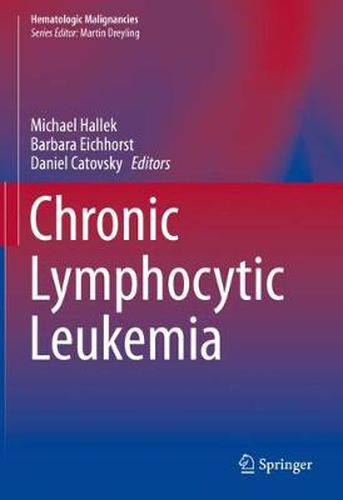Readings Newsletter
Become a Readings Member to make your shopping experience even easier.
Sign in or sign up for free!
You’re not far away from qualifying for FREE standard shipping within Australia
You’ve qualified for FREE standard shipping within Australia
The cart is loading…






This book summarizes current knowledge on chronic lymphocytic leukemia (CLL), taking into account the most recent research. All aspects are considered, including pathophysiology, clinical presentation, diagnosis, prognosis, treatment, follow-up, and complications and their management. Readers will find important information on the various prognostic markers as well as practical guidance on the use of different diagnostic procedures. A key focus of the book is the changing treatment paradigm in CLL as progress in understanding of pathogenesis and pathophysiology leads to the identification of new potential therapeutic targets. General treatment concepts are clearly described, and it is explained how choice of treatment for CLL depends on stage, age, and performance status as well as specific genetic aberrations. In addition, frontline therapeutic strategies for disease relapse, including allogeneic stem cell transplantation, are reported. Looking beyond CLL, the diagnosis and therapy of T-cell prolymphocytic leukemia and T-cell large granular lymphocyte leukemia, two rare CLL-related entities, are addressed.
$9.00 standard shipping within Australia
FREE standard shipping within Australia for orders over $100.00
Express & International shipping calculated at checkout
This book summarizes current knowledge on chronic lymphocytic leukemia (CLL), taking into account the most recent research. All aspects are considered, including pathophysiology, clinical presentation, diagnosis, prognosis, treatment, follow-up, and complications and their management. Readers will find important information on the various prognostic markers as well as practical guidance on the use of different diagnostic procedures. A key focus of the book is the changing treatment paradigm in CLL as progress in understanding of pathogenesis and pathophysiology leads to the identification of new potential therapeutic targets. General treatment concepts are clearly described, and it is explained how choice of treatment for CLL depends on stage, age, and performance status as well as specific genetic aberrations. In addition, frontline therapeutic strategies for disease relapse, including allogeneic stem cell transplantation, are reported. Looking beyond CLL, the diagnosis and therapy of T-cell prolymphocytic leukemia and T-cell large granular lymphocyte leukemia, two rare CLL-related entities, are addressed.